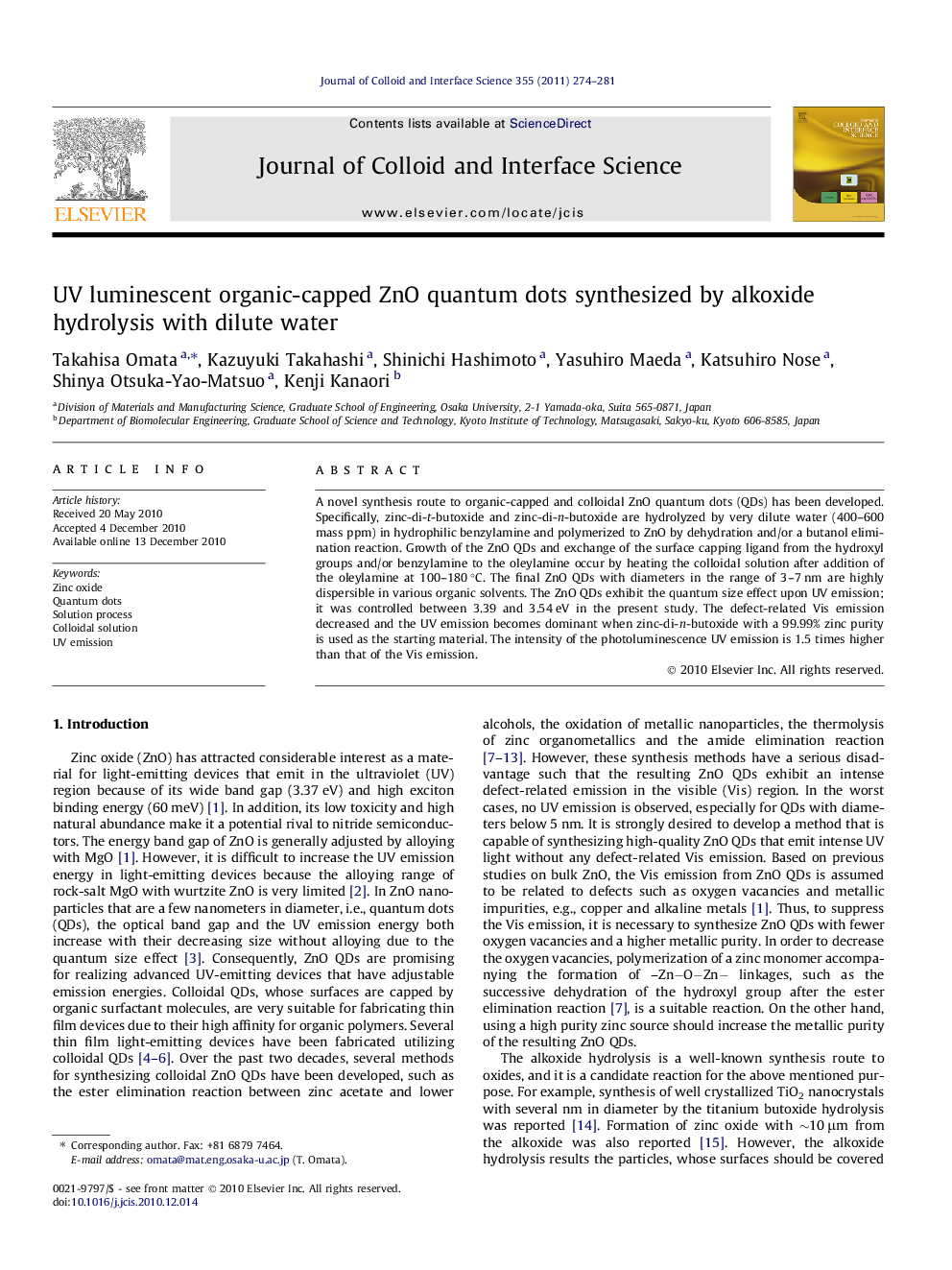| کد مقاله | کد نشریه | سال انتشار | مقاله انگلیسی | نسخه تمام متن |
|---|---|---|---|---|
| 609056 | 880614 | 2011 | 8 صفحه PDF | دانلود رایگان |

A novel synthesis route to organic-capped and colloidal ZnO quantum dots (QDs) has been developed. Specifically, zinc-di-t-butoxide and zinc-di-n-butoxide are hydrolyzed by very dilute water (400–600 mass ppm) in hydrophilic benzylamine and polymerized to ZnO by dehydration and/or a butanol elimination reaction. Growth of the ZnO QDs and exchange of the surface capping ligand from the hydroxyl groups and/or benzylamine to the oleylamine occur by heating the colloidal solution after addition of the oleylamine at 100–180 °C. The final ZnO QDs with diameters in the range of 3–7 nm are highly dispersible in various organic solvents. The ZnO QDs exhibit the quantum size effect upon UV emission; it was controlled between 3.39 and 3.54 eV in the present study. The defect-related Vis emission decreased and the UV emission becomes dominant when zinc-di-n-butoxide with a 99.99% zinc purity is used as the starting material. The intensity of the photoluminescence UV emission is 1.5 times higher than that of the Vis emission.
A novel technique to synthesize organic-capped ZnO QDs has been developed. The UV emission intensity is higher than that of the Vis emission and adjustable by the QD size.Figure optionsDownload high-quality image (122 K)Download as PowerPoint slideResearch highlights
► Organic-capped and colloidal ZnO quantum dots that are dispersible in various organic solvents have been synthesized by alkoxide hydrolysis based reaction and successive surface capping with oleylamine.
► The ZnO quantum dots exhibit quantum size effect on their UV emission.
► The defect-related visible emission that usually appears for the ZnO was highly depressed by using a high purity zinc alkoxide as a starting material.
Journal: Journal of Colloid and Interface Science - Volume 355, Issue 2, 15 March 2011, Pages 274–281